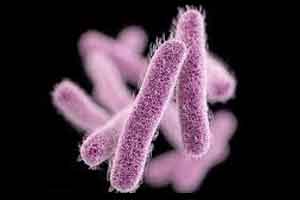- Home
- Editorial
- News
- Practice Guidelines
- Anesthesiology Guidelines
- Cancer Guidelines
- Cardiac Sciences Guidelines
- Critical Care Guidelines
- Dentistry Guidelines
- Dermatology Guidelines
- Diabetes and Endo Guidelines
- Diagnostics Guidelines
- ENT Guidelines
- Featured Practice Guidelines
- Gastroenterology Guidelines
- Geriatrics Guidelines
- Medicine Guidelines
- Nephrology Guidelines
- Neurosciences Guidelines
- Obs and Gynae Guidelines
- Ophthalmology Guidelines
- Orthopaedics Guidelines
- Paediatrics Guidelines
- Psychiatry Guidelines
- Pulmonology Guidelines
- Radiology Guidelines
- Surgery Guidelines
- Urology Guidelines
Synthetic Virus developed to Tackle Antimicrobial Resistance

In line with approach of National Physical Laboratory (NPL) to address the global threat of antimicrobial resistance by helping to develop new antibiotics, a team of researchers from NPL and UCL have engineered a purely artificial virus, which has the ability to kill bacteria on first contact.The new virus is built using the same geometric principles that determine structures of naturally occurring viruses, known as polyhedral capsids. The resulting synthetic virus acts as a 20-nm spherical 'drone' that, upon recognising bacterial cells, attacks their cell walls with bullet speed and efficacy.The study has been published in Nature Communications.
Antibiotic resistance has become an ever-growing global challenge, with more than 700,000 people across the world dying from drug-resistant infections every year.[2] As a result, antibiotic discovery has fallen well behind its historical rate, with traditional discovery methods being exhausted. NPL is addressing technology and innovation challenges in response to this, including support for the implementation of synthetic / engineering biology.
In contrast to a traditional antibiotic, these artificial viruses tackle a bacterium as a whole, starting with the disruption of the most complex, but vulnerable part of a bacterial cell - its membrane. This provides an advantage over an antibiotic, which must reach and hit its single target inside a bacterial cell to be effective.
This of action means that bacteria are less likely to become resistant to the virus - opening the door to potentially more effective treatments of resistant bacteria.
Furthermore, because such viruses leave human cells unaffected, but have the ability to infect them like viruses do, they hold promise for gene delivery and gene editing - core capabilities for gene therapy and synthetic biology - as well as for killing bacteria that hide inside human cells.
Max Ryadnov, science leader in Biometrology at NPL:
"This work adds to the growing toolbox of engineering metrology methods and materials being developed at NPL to realise the full potential of synthetic biology for industry and healthcare. The research may also offer long-term and creative solutions for alternative treatments of infectious diseases that are urgently needed."
Bart Hoogenboom, Professor of Biophysics at UCL:
"When we exposed bacterial model membranes to these synthetic viruses in our experiments, the results were devastating: within a few minutes, the membranes were completely destroyed."
The findings pave the way for exemplar synthetic biology tools for research and therapeutic use, while demonstrating how effective innovative measurement can be in addressing real-life challenges.
This study was funded by the Engineering and Physical Sciences Research Council (EPSRC), European Metrology Programme for Innovation and Research (EMPIR) and the Department for Business, Innovation and Skills (BEIS). Specialist measurements were performed at the Diamond Light Source.
NPL's world-leading research is also supporting the advancement of synthetic biology through a new £7 million virtual lab to underpin the Centre for Engineering Biology, Metrology and Standards, with LGC, NIBSC and Imperial College London's SynbiCITE. This new lab aims to improve the reproducibility of research results to help convert innovation in synthetic biology into valuable products and services.

Disclaimer: This site is primarily intended for healthcare professionals. Any content/information on this website does not replace the advice of medical and/or health professionals and should not be construed as medical/diagnostic advice/endorsement or prescription. Use of this site is subject to our terms of use, privacy policy, advertisement policy. © 2020 Minerva Medical Treatment Pvt Ltd